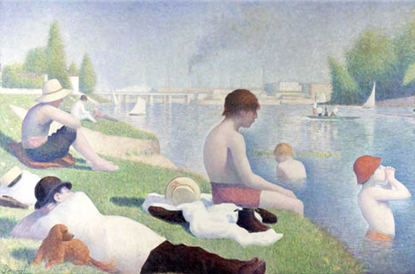IN 1870 Camille Pissarro took refuge in London from the Franco-Prussian War and found the city a less than congenial bolt-hole. ''It is only abroad,'' the artist wrote wistfully to his friend Theodore Duret, ''that one feels how beautiful, great and hospitable France is. What a difference here! One gathers only contempt, indifference, even rudeness . . . '' Pissarro had experienced, at first hand, the attitudes that would characterise British taste for the following half- century or more: a specific, subtle dislike for French art, particularly among collectors and curators; and a pronounced distrust of just about any painting tainted by associations with the avant-garde.
Nowhere was this more apparent than at the National Gallery, whose custodians battled tooth and nail to preserve the museum as a sanctum of Old Master painting, uncorrupted by any evidence of the revolutions of early modern art. Sir Charles Eastlake, the National Gallery's first director, put the point of view succinctly in his scathing comment that ''A crying defect in all French painters, though perhaps not so much their fault as their country's, is that gout libre which is such a terrible abuse of the art''. The grimace of distaste with which he must have pronounced those two foreign words can still be sensed.
So what would Eastlake have made of the National Gallery's nineteenth-century collection - which was recently reopened to the public, after a complete rehang? He would, doubtless, have been horrified by the prominence given to that great riverbank idyll of the fin de siecle, Seurat's Bathers at Asnieres - a perfect example, after all, of just that kind of progressive Frenchy art which he so disliked. Yet the passage of time can do strange things to pictures, and seeing Seurat's Bathers at the National Gallery now you are more...


